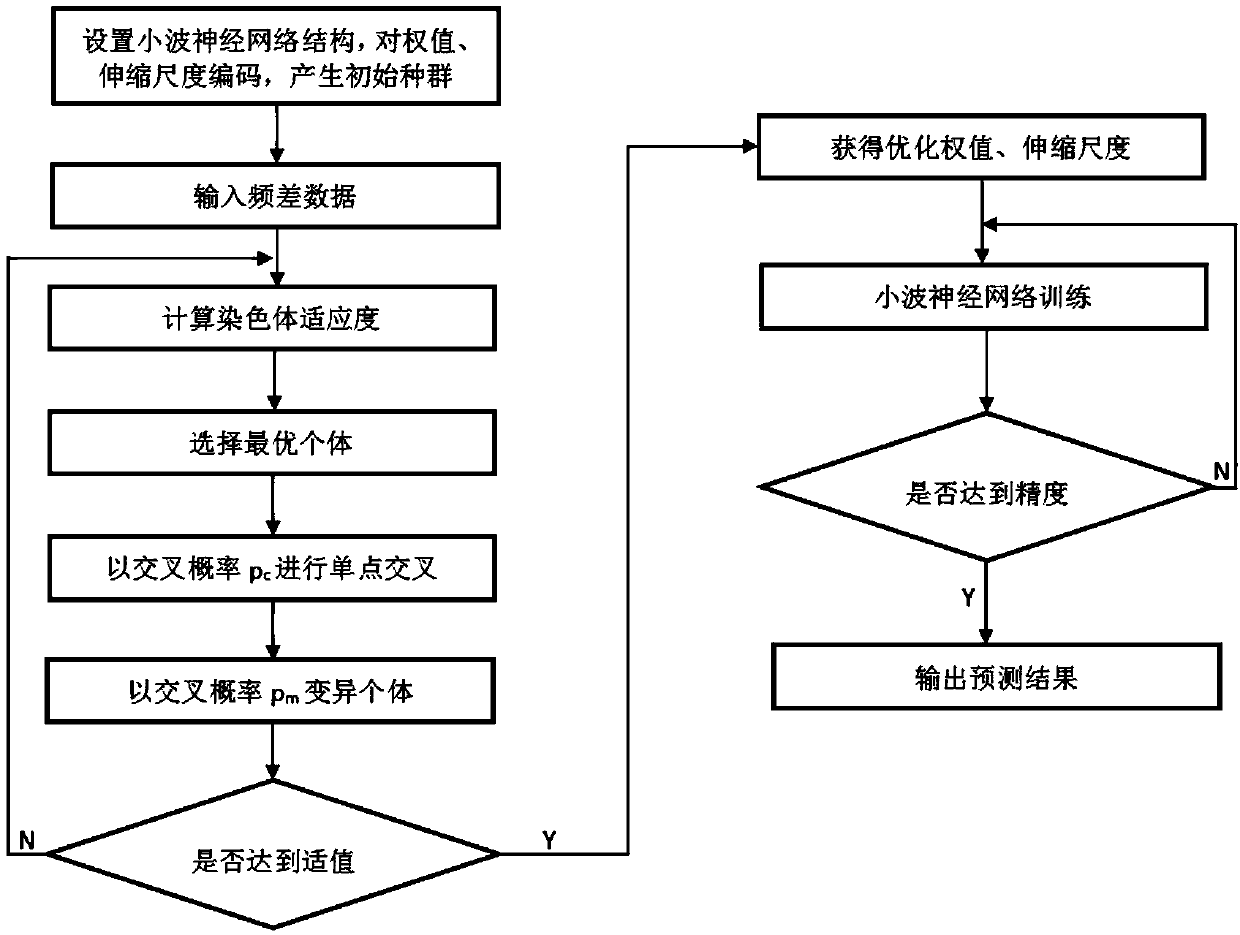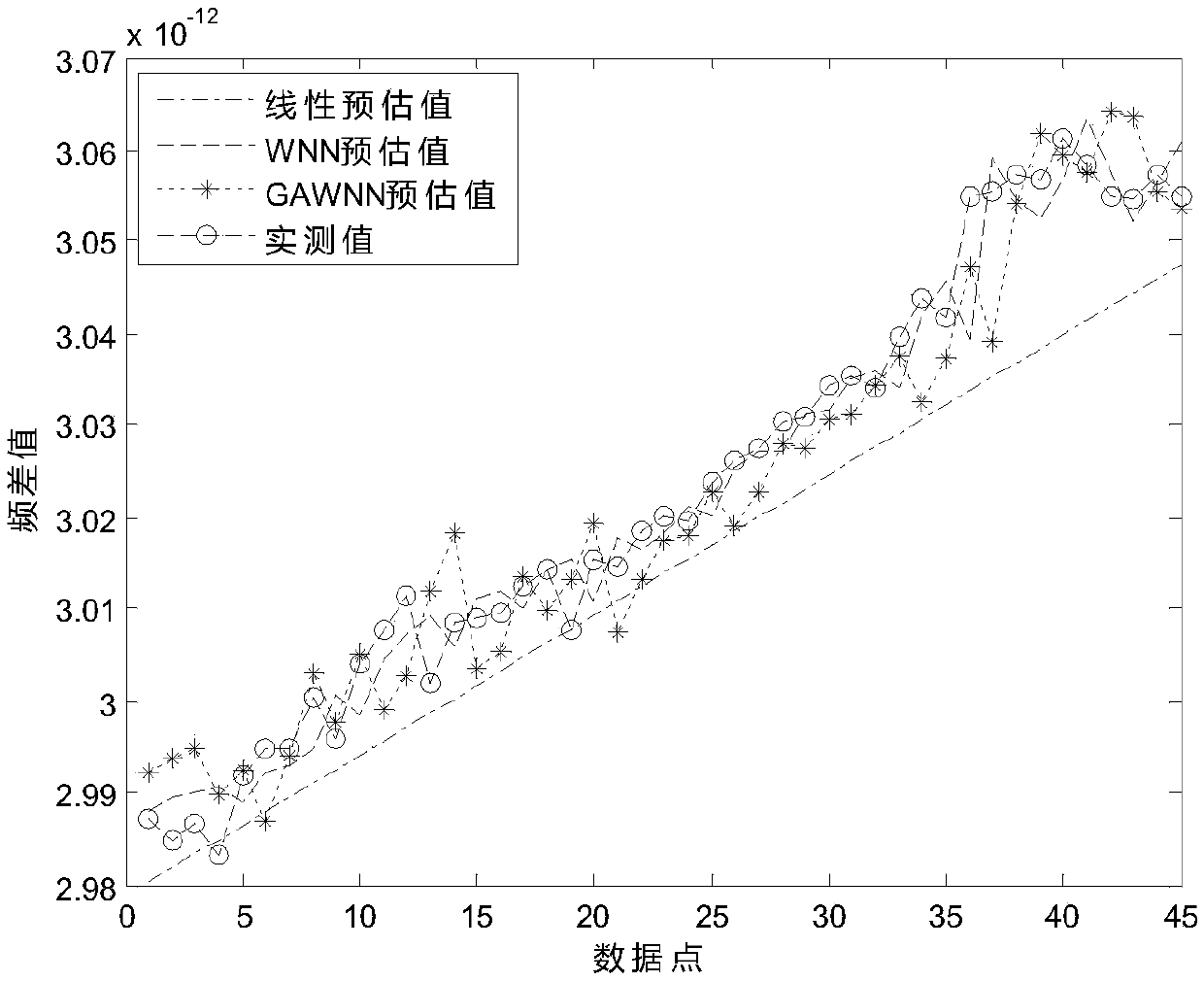Cesium fountain clock and hydrogen clock frequency difference estimation method for optimizing wavelet neural network on basis of genetic algorithm
A technology of wavelet neural network and genetic algorithm, applied in the data field when the fountain clock is out of service, can solve problems such as deviation and insufficient accuracy of straight line fitting data, and achieve small root mean square error, better and more accurate prediction results, and better results good effect
- Summary
- Abstract
- Description
- Claims
- Application Information
AI Technical Summary
Problems solved by technology
Method used
Image
Examples
Embodiment Construction
[0029] The present invention will be described in further detail below in conjunction with specific embodiments and with reference to the accompanying drawings.
[0030] Step 1. Perform outlier detection on the frequency difference data between the cesium atomic fountain clock and the hydrogen clock measured in the laboratory.
[0031] The outlier detection utilizes the Wright criterion, and the detected atomic clock frequency difference data is {x 1 ,x 2 ,x 3 ,...x N-1 ,x N}, the sample mean is The standard deviation is Wright's criterion is that if the measured value Then this value is an outlier and should be removed, and the frequency difference data between the cesium atomic fountain clock and the hydrogen clock after the outlier detection is obtained.
[0032] Step 2. In the process of clock difference acquisition, each channel represents a clock of a model, and the values of different channels at the same time are subtracted and transformed to obtain the clo...
PUM
 Login to View More
Login to View More Abstract
Description
Claims
Application Information
 Login to View More
Login to View More - R&D
- Intellectual Property
- Life Sciences
- Materials
- Tech Scout
- Unparalleled Data Quality
- Higher Quality Content
- 60% Fewer Hallucinations
Browse by: Latest US Patents, China's latest patents, Technical Efficacy Thesaurus, Application Domain, Technology Topic, Popular Technical Reports.
© 2025 PatSnap. All rights reserved.Legal|Privacy policy|Modern Slavery Act Transparency Statement|Sitemap|About US| Contact US: help@patsnap.com



